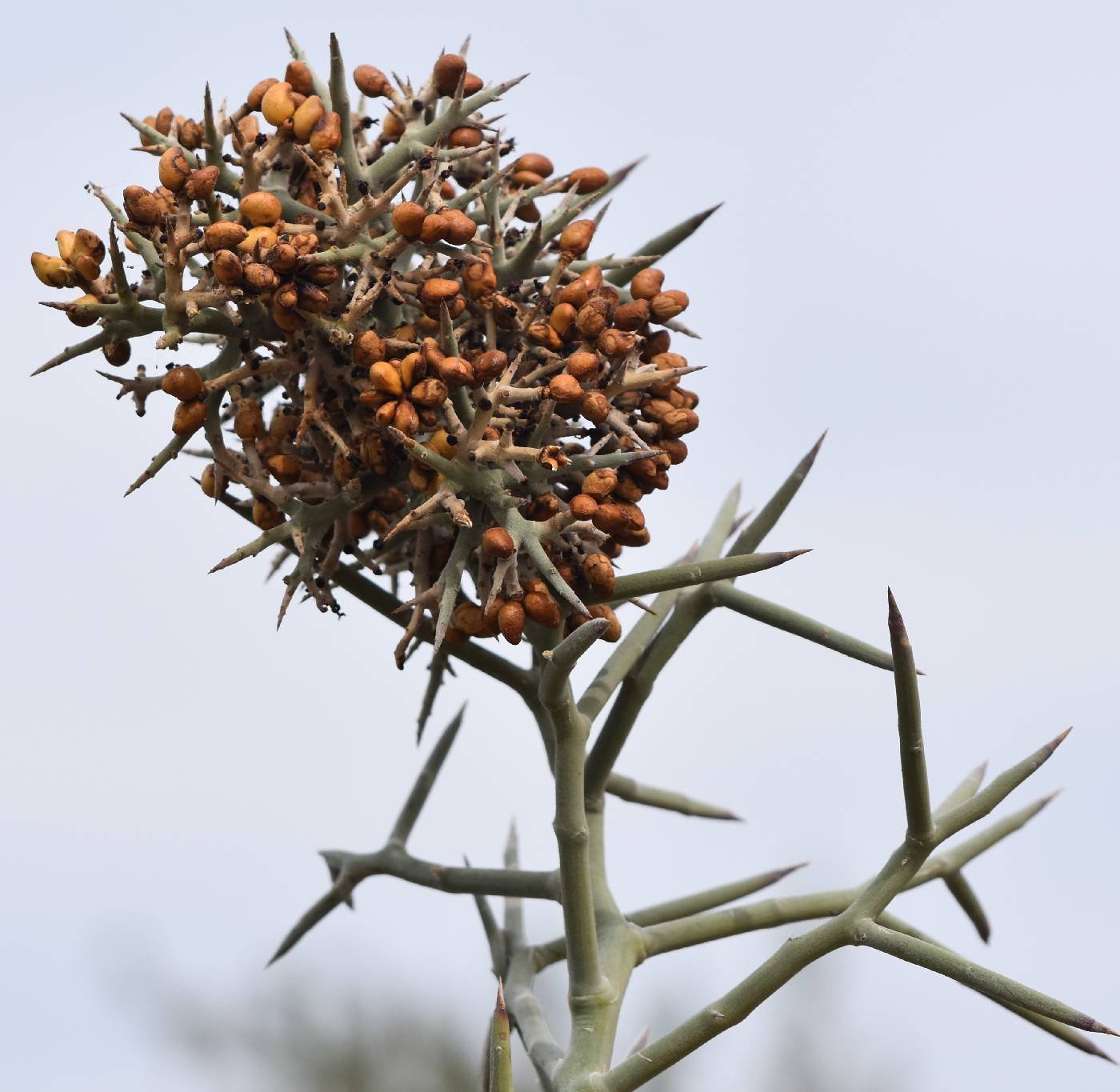Crucifixion Thorn
Castela emoryi
Family: Simaroubaceae
Large spinescent shrub or small tree, almost leafless, growing 10-15’h. Plants are mostly leafless, especially when older and when water is scarce; the green stems are photosynthetic. Clusters of pink and white flowers appear in late spring/early summer. Seeds are contained in clusters of fruit in groups of 5. The fruit is tan, green, red or brown in color, turning black with age. and may persist on the tree for several years. Plants are dioecious meaning that male and female plants are separate.
One of the three similar-looking species in our region called “Crucifixion Thorn” which also includes Canotia holacantha, and Koeberlinia spinosa (all three species are found in Ironwood Forest National Monument).
Full to Part sun, low to moderate water, hardy to 25°F. Good drainage is important.
Nectar-rich flowers; the nectar is collected by ants, and pollination is performed by wasps and bees, particularly bumblebees. Plants may be swarming with tarantula hawks when blooming, a formidable though gentle wasp—they almost never sting people unless provoked.
The Yavapai people traditionally use this as a medicinal plant, making a dermatological aid from the milky fluid of pulverized buds— rubbed on face to stop pimples.
Formerly called Holacatha emoryi. The genus Castela is named for René R.L. Castel, French botanist, poet, editor, opera librettist, 1759--1832. The epithet, emoryi, is in honor of Brigadier General William Hemsley Emory, who was chief surveyor of the U.S. Boundary Survey team of 1852 and collected specimens for the Smithsonian Institution.
Sonoran Desert plains and dry washes, never abundant, 500-2300 ft. in California, Arizona, and Sonora.

